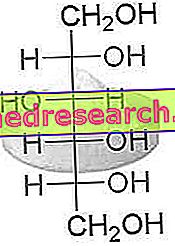Generality
Thyroxine-binding globulin ( TBG ) is a protein capable of binding and transporting thyroid hormones in the blood .
TBG exhibits a high affinity for the hormone thyroxine (T4) ; the interaction with triiodothyronine (T3) is less stable.

An increase in TBG can result in an increase in total T4 and T3 without an increase in hormonal activity in the body. If a further thyroid hormone test is indicative of hypo- or hyperthyroidism without symptoms, the levels of thyroxine-binding globulin become more clinically relevant.
The abnormalities of thyroid hormone-TBG interaction can result from:
- Hormone-protein binding defect ; in this case, the control of thyroid hormone secretion is preserved and the pituitary-thyroid axis is normal.
- Primitive changes in the plasma concentration of thyroid hormones, as happens, for example, in hypothyroidism or thyrotoxicosis. In this case, the normal homeostatic balance of hormonal secretion is lost, both due to a defect in the control mechanism itself and to the inability to counterbalance the effects of the underlying disease.
What's this
TBG stands for Thyroxine-binding globulin ( thyroxine-binding globulin ); it is a glycoprotein with a molecular weight of 60, 000 Dalton, responsible for the transport of thyroid hormones, T3 and T4, in the blood.
TBG is synthesized by the liver and has a unique binding site in its structure, both for T3 and T4.
Despite the reduced plasma concentrations, TBG binds to itself almost all of the thyroid hormones (70-80%), which to a lesser extent are associated with two other proteins, also synthesized by the liver: albumin and transthyretin (TTR or T4-TBPA-prealbumin moiety).
To a lesser extent the thyroid hormones are found free in the blood: only about 0.02-0.04% of T4 and about 0.3-0.4% of T3.
The need to convey thyroid hormones by means of special transport proteins arises from their lipophilic nature, which makes them insoluble in water-based liquids, such as blood. However, to acquire biological activity and regulate the metabolism in the target cells, the thyroid hormones must necessarily separate from these carrier proteins; this is why for some years it has been preferred to dose the plasma levels of the free fraction (free T4 and T3, often indicated in the analysis certificate as FT3 and FT4), rather than the absolute ones (T3 and total T4).
Let's try to clarify the concept better.
Importance of TBG and the free fraction of T4 and T3
There may be situations in which the patient appears to be hyperthyroid or hypothyroid, based on the absolute value of thyroxine, but without showing the typical signs and symptoms of this condition; this is the case, for example, of women on estrogen therapy, in which high levels of estrogen can increase the synthesis and binding of TBG against thyroid hormones; in such circumstances, in the face of a reduced concentration of free T4, the body tries to compensate by increasing the synthesis of these hormones, stimulated by the pituitary hormone TSH; we will therefore have high values of total T4, high values of TBG, and normal values of free T4.
The opposite situation occurs during therapies with corticosteroids or in the presence of severe hepatic insufficiencies, factors that decrease the synthesis of TBG by the liver: the patient appears hypothyroid according to the values of total and euthyroid T4 (therefore healthy) according to the interpretation of free T4 values.
The most common TBG values reported in the literature are between 13 and 28 mg / L.
As we have seen, even marked variations in the plasma concentration of transport proteins generally have no effect on the proportion of free thyroid hormones, and therefore have no effect on the metabolic state ; this is because as TBG increases there is generally a compensatory increase in total T4 (and vice versa), in order to keep the free fraction of the hormone in balance. The same applies to T3.
According to what has been said, excesses or defects of TBG determine modifications in the same sense of the concentration of total thyroid hormones, which may erroneously suggest a condition of hyper- or hypo-thyroidism. Consequently, being many the physiological and pathological conditions that alter the concentration of TBG, therefore of the total thyroid hormones, a correct evaluation of the thyroid function requires a simultaneous dosage of the free fraction of T4 and T3, as well as of the TSH (pituitary hormone that stimulates the thyroid to produce the aforementioned hormones). The value of FT3 and FT4 is established indirectly, and in this sense the values of TBG and of the other carrier proteins play a very important role.
Saturation of TBG
In normal subjects the binding capacity of TBG is exploited for about 1/3, so only about 30% of TBG is saturated by thyroid hormones, while 70% remains free from this link. As a rule, in subjects suffering from hyperthyroidism the proportion of free binding sites decreases, because the body tends to defend itself from the excess of thyroid hormones by binding them to the plasma proteins responsible for their transport. The opposite condition occurs in hypothyroidism, where the percentage of saturated TBG falls below the normal 30%. NOTE: we referred to the saturation percentage, while the absolute TBG levels are not so affected by the two diseases; on the contrary, in the presence of hyperthyroidism, TBG levels tend to be lower than the norm (although, as we have seen, their percentage of saturation tends to be much higher), while in the presence of hypothyroidism it is possible to see the opposite condition (high TBG values even if poorly saturated compared to the norm).
T3 Resin Uptake (T3RU)
There is a specific test called T3 Resin Uptake (T3RU) which directly estimates the amount of unsaturated TBG; at high levels of T3RU (measured according to the radioactivity of the fraction captured by the resin) corresponds a high percentage of TBG saturation and vice versa; in high words, at high levels of T3RU corresponds a low percentage of TBG free from the link to thyroid hormones.
Why do you measure
Thyroxine-binding globulin (TBG) levels should be evaluated when abnormal T4 and T3 values are found, especially if the patient appears to have normal thyroid function.
TBG increases most commonly during pregnancy, estrogen therapy or during oral contraceptive use, but also in the acute phase of infectious hepatitis. The plasma concentration of thyroxine-binding globulin is decreased, however, during illnesses that reduce hepatic protein synthesis and in the case of excessive use of anabolic steroids or corticosteroids.
High doses of some drugs - such as phenytoin and aspirin and its derivatives - displace T4 from its TBG binding sites, causing a fictitious decrease in total T4 serum levels.
Normal values
The normal reference range for TBG is 13-28 mg / L.
TBG Alta - Cause
TBG levels can be high:
- In hypothyroidism (decreased thyroid activity);
- During pregnancy;
- During therapy with estrogens and progesterone (eg birth control pills);
- Intake of clofibrate (lipid-lowering drug);
- In genetic or idiopathic liver diseases;
- In the case of acute intermittent porphyria.
An increase in the normal TBG values can also be observed, in the case of:
- Estrogen-producing tumors;
- Acute and chronic hepatitis;
- Heroin and methadone abuse.
TBG can also be increased due to an alteration linked to the X chromosome.
TBG Low - Causes
A decrease in normal TBG values can be observed in case of hypoproteinemia (secondary to nephrosis, liver disease, etc.), genetic deficiency and testosterone-producing tumors.
Reduced TBG values can also be caused by:
- Hyperthyroidism;
- Nephrotic syndrome (renal disease characterized by protein loss);
- Liver disease;
- Severe systemic disease;
- Cushing syndrome;
- Decompensated acidosis;
- Malnutrition.
TBG also decreased following administration of androgens, corticosteroids and anabolic steroids.
How to measure it
The TBG examination is performed on a blood sample taken from a vein in the patient's arm.
Preparation
The blood sample must be preceded by a fasting period of at least eight hours.
Interpretation of Results
Genetic mutations can lead to a defect or hyperproduction of thyroxine-binding globulin.
An increase in plasma TBG can for example be appreciated in the presence of hereditary analbuminemia or familial euthyroid hyperiroxinemia. High TBG values can also be recorded during pregnancy, hyperestrogenism and hypothyroidism.
A decrease in TBG in plasma can instead be appreciated in hyperandrogenism, in severe liver insufficiencies, in hyperthyroidism, in protein-calorie malnutrition and in nephrotic syndrome ( low TBG values will generally correspond to a greater saturation of TBG).
As for the drugs capable of modifying TBG plasma levels, estrogens, oral contraceptives, tamoxifen, methadone, heroin and 5-fluorouracil in a positive sense are recalled, while TBG concentrations reduce drugs such as androgens and anabolic steroids, nicotinic acid, valproic acid, high dose salicylates (such as aspirin), phenytoin and glucocorticoids.



